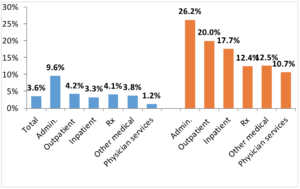Rob Weber //
Founders or Investors: These are the top 5 signs a startup will succeed
As a tech founder and investor, I have spent a lot of time thinking about why some startups scale and why others fail. You have to when your livelihood is riding on whether or not you can execute. And when you’re putting other peoples’ money on the line, knowing what to do and being able to do it isn’t enough, but you have to be able to explain your decisions and actions.
When I made enough money as a founder to start angel investing, I was overly focused on the idea and strategy. Why? The business I had founded with my twin brother Ryan Weber was successful in terms of financial returns, but it lacked defensibility. In my opinion, that’s what prohibited our business from scaling to an even greater outcome- we didn’t have a great idea or strategy.
Learning from this lesson from my own business, I compensated by investing in founders who had a clever idea and a good strategy. Sometimes it felt like I was just investing in a nice pitch deck. Many of these teams just could not execute, and over time, they’d fail.
You can be a brilliant founder, with a clever idea and a good strategy, and still fail. It happens all the time. If you can’t attract customers, build a team, and set and achieve goals, you’re sunk.
As a VC, I’ve had to synthesize everything I’ve learned about operating and investing into a scalable, repeatable process- to turn these lessons into actionable guidance for conducting diligence. Founders who work towards these things increase their chances of reaching an exit, and investors who look for these things increase their chances of generating a return.
These are the top 5 signs a startup will succeed.
1) The startup has founders with great soft skills. Having a great idea or writing some really kickass code isn’t enough to scale a big business. Soft skills are even more important than tech skills or industry experience. A founder/CEO’s job includes sales, recruiting top talent, management, etc. All of these are soft skills.
2) The startup has a culture of accountability, and is focused on key growth metrics. Creating a metric driven, accountable culture is challenging. It is easier to do with a 4-person startup than a large-scale growth business so it is a critically important early piece.
3) The startup is good at new product development. Teams that are good at product development are analytical and creative. They run experiments before building a complete product which enables them to avoid focusing on building the wrong product with the wrong features.
4) The startup is focused on finding and perfecting one scalable customer acquisition channel. Experimenting is expected in the very early going, but eventually you need to bet on the one channel that can get you to scale. It could be digital media-focused customer acquisition, a referral program, or viral social strategy, anything that creates compounding returns. You need to be world-class at whatever your dominant channel is to succeed. For most of the best startups, growth is designed into the product or some other kind of clever growth hack is utilized. Look at Airbnb’s famous spamming of Craigslist (Airbnb Growth Study (benchhacks.com)) or DropBox’s famous early referral incentives. This is the scrappy team, focused on the right things, that has found the right product, and a way to scale.
5) The startup has an adaptable, entrepreneurial team. Early-stage is not the time for a team fixated on management systems. The time for investing more heavily in management systems is when your startup approaches 20–50 employees or more. In the beginning, you need a team with entrepreneurial skills, including customer empathy, product engineering strength, and go-to-market strength.
For former founders-turned-investors like myself, we need to be particularly aware of not being overly attracted to clever ideas in big markets, but instead focus on identifying the teams that can find their North Star to take them from point A to point B so the startup has an opportunity to start compounding. Execution is everything.




